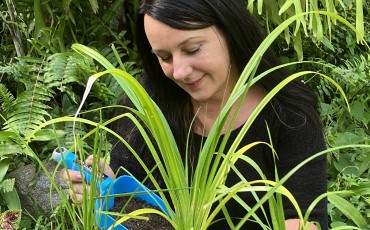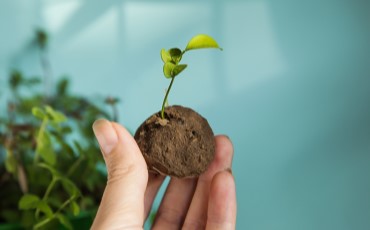Critical Nature: The importance of native plants and the urban environment
As our cities continue to grow and expand, so too does the impact on our natural environment and surrounding ecosystems.
Incorporating native plants into our urban landscapes becomes increasingly critical to helping preserve and protect local flora and fauna. Native plants play a crucial role in maintaining a healthy and balanced ecosystem and offer numerous benefits for both the environment and those that live there.
Biodiversity
One of the primary benefits of native plants is that they support local biodiversity. Native plants have evolved over time to thrive in their specific regions and climates, and they provide critical habitats for local wildlife, such as insects, birds, and small mammals. In urban environments, where green space is often limited, incorporating native plants into landscaping and public spaces can help to conserve and protect local biodiversity.
Resilience: Native plants are often better adapted to local conditions than non-native plants, making them more resilient in the face of environmental challenges, such as drought, floods, and extreme weather events. This means that native plants are less likely to require excessive watering or other inputs, reducing the strain on local resources and infrastructure.
Improved Air Quality
Urban environments are often plagued by poor air quality, which can have negative impacts on human health. However, native plants can help to improve air quality by removing pollutants and producing oxygen. For example, certain native species, such as the common reed, have been shown to be effective at removing heavy metals and other pollutants from the air.
Climate Control
In addition to improving air quality, native plants also play an important role in regulating local temperatures and mitigating the effects of the urban heat island effect. Urban areas tend to be significantly hotter than rural areas due to the concentration of buildings and pavement, but incorporating native plants into the urban landscape can help to mitigate this effect by providing shade, evaporating water and reducing the overall temperature.
Aesthetics
Finally, native plants can add beauty and interest to the urban landscape. With their unique colors, textures, and shapes, native plants can help to create vibrant and inviting public spaces that reflect the natural beauty of their local environment.
The Climate Wars: A message about nurturing nature
Incorporating native plants into urban environments is essential for creating a healthy and sustainable urban ecosystem, providing critical habitats for wildlife, improving air quality, regulating temperatures and adding beauty to the urban landscape.
As part of Curiocity Brisbane 2023, Simone Eisler’s work, The Climate Wars, uses native plants in it’s construction to deliver a powerful message about nurturing the future of plants and seed banks within a changing political and climatic world. Resonating with the myths of the Trojan Horse and the biblical ark, the seven-metre-tall living sculpture will stand in stark contrast to the Brisbane City skyline.
Made from 10 different species and 2000 plants, including several natives that mimic horsehair, mane and tail, The Climate Wars installation is proudly supported by Fairhill Native Botanic Gardens. Located in Yandina, Queensland, Fairhill Native Botanic Gardens is the Sunshine Coast’s original native botanic gardens, and South East Queensland’s largest native plant nursery.
As the city forms a fortress against nature, the ‘ark’ must infiltrate the urban environments through subterfuge to disseminate native plant seeds that in turn provide food for native animals, insects and birds, support ecosystems and habitats and cross pollination, and enable the native flora and fauna cycles to continue.
Visitors can find out more on Simone Eisler’s practice and sculpture in a series of workshops and conversations held as part of Curiocity Brisbane 2023.
 Nature and the Artist: A curious conversation
Nature and the Artist: A curious conversation
Why is nature such a source of inspiration for artists and why are living artworks a new medium for artists?
Join Public Art Curator Jay Younger and artist Simone Eisler for a conversation that delves into why nature – and the garden in particular – offers a rich metaphor for artists, and hear the story behind The Climate Wars, Simone’s artwork for Curiocity Brisbane.
This free event will be held at 2.30pm in Queensland Museum’s Theatre. Find out more here.
Make a Seed-Bomb Horse: Free workshops
Throughout Curiocity Brisbane 2023, The Climate Wars artist Simone Eisler is holding workshops for visitors to create their very own mini living horse artwork to take home and plant in their garden. These free, all-ages drop-in workshops will be held on Sunday 26 March and Sunday 2 April 2023.
Visit the website for more information and workshop times.
Thank you to Fairhill Native Botanic Gardens
The Climate Wars artwork is produced in partnership with



